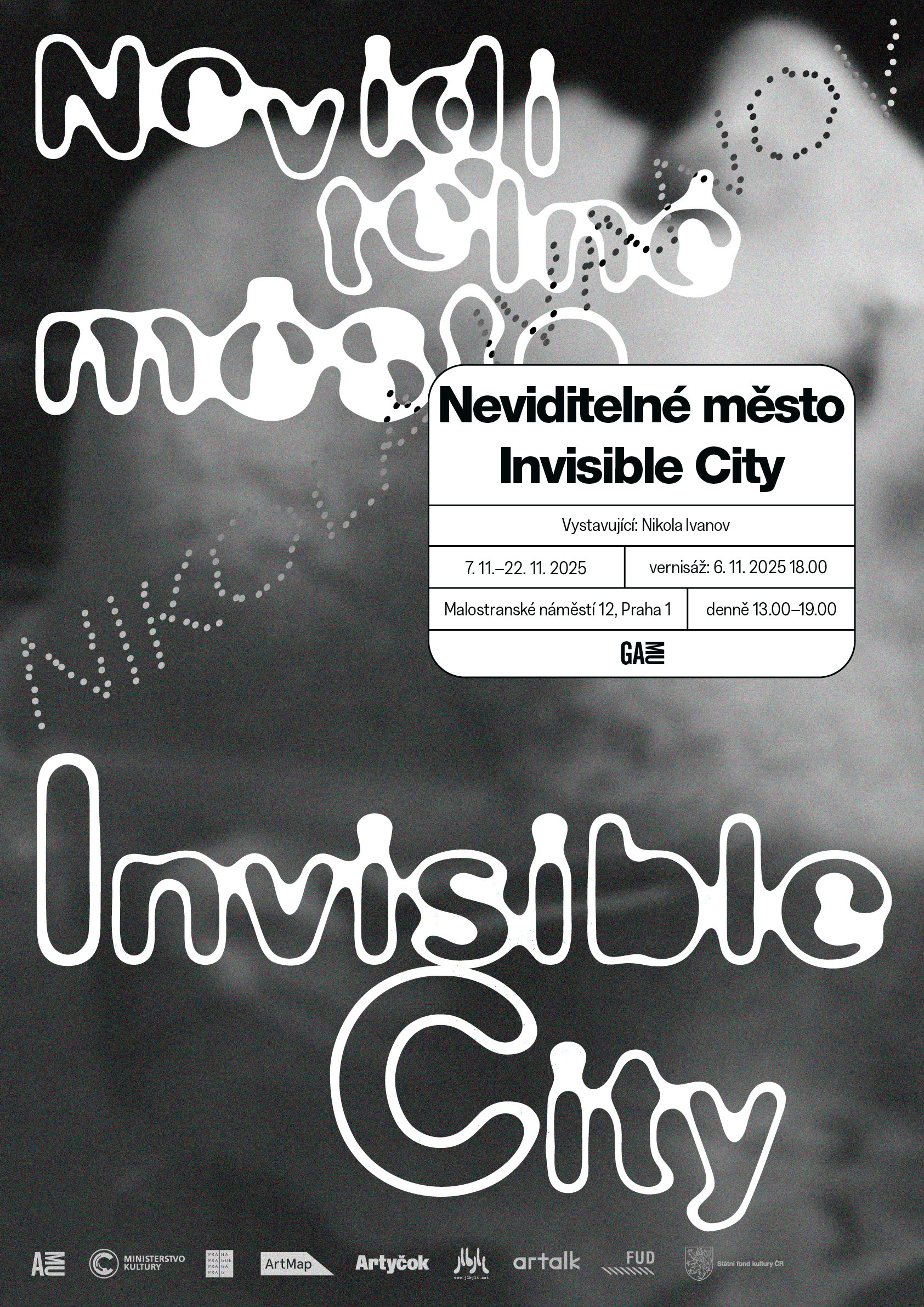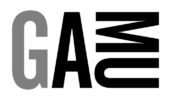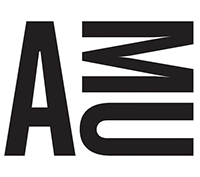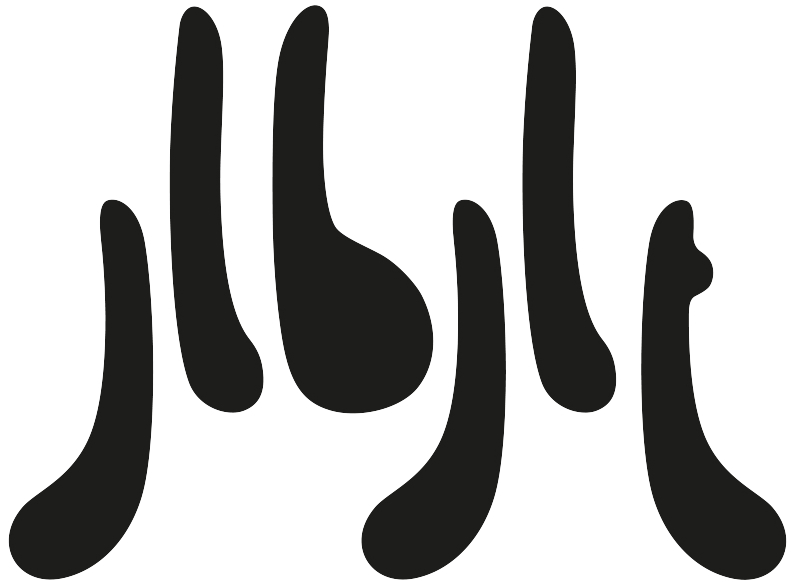7. 11. - 22. 11. 2025 (opening: 6. 11. 2025 18:00)
curated by: Vojtěch Märc
graphic design: Žofia Fodorová a Pavla Nečásková

Open daily: 13.00 – 19.00
Guided tour: 20. 11. 2025 18:00
FB event: https://fb.me/e/1QUEzNYYJL
“Each man bears in his mind a city made only of differences, a city without figures and without form, and the individual cities fill it up.”
Italo Calvino
Over the last few days, the Wiesbaden Museum has been unusually busy. People have come to see the more than century-old painting of a drowned Ophelia drifting among lotus flowers, painted by Friedrich Heyser. This is because fans of Taylor Swift have noticed the reference to this painting in the first track of her recently-released album. In the music video, Swift is seen coming out of the water and out of the image; in her own words, Swift is rejecting the fate of Ophelia.
And the protagonist of Nikola Ivanov’s new film is similar to Ophelia. She, too, is coming alive and shedding her fate, as if she were averting the artistic male gaze and curatorial mansplaining. Who, then, is the addressee of Ivanov’s love and farewell letter which blends a strangely undramatic melodrama, a monologue full of reproach, as well as the motivational speech of an imaginary coach?
In Ivanov’s film, the parallels between sorrow for love lost and the mourning for a shambled climatic stability seem almost leading. And leading the viewer in this way may obfuscate the fact that in artistic work, the domains of the personal and political need not always overlap. They are not so much identical – as we see in the famous feminist slogan – but are rather analogous. One cannot be transferred to the other without leaving a remainder. This is not about toeing the line of regressive patriarchy but rather about understanding the irreducibility of the personal sphere which may, or may not, become political.
The relationship between the psychological and environmental dimension is also developed in two of Ivanov’s photographic series. The first shows a Swiss glacier covered in canvases which are supposed to protect it from sun rays and thus slow the irreversible melt. The second was created in the Bulgarian city of Varna and shows the draining of reservoirs in the shape of the Black Sea, on whose coast the city stands.
The exhibition title helps wedge Ivanov’s work between the invisible cities described in the novel by Italo Calvino of the same name, most likely in the section “City and Memory.” The relationship between an architectural or urban space with memory has been well-documented. But Ivanov is not building palaces to memory. His city rather adopts an anti-mnemonic function – it does not help the remembrance of things, but aids in their forgetting.
This also applies to the exhibited model composed of various cities which submerge and bleed into one another. The individual cities are as interchangeable as their occupants. Alienation here merges with something strangely familiar. A generic testimony naturally does not offer the option to identify with it, nor does it provide a sensible outcome. This can only result from the presence of random singularities and unexpected returns, which can only be duly noted over a generic background.
The spheres of individualities and of personal features are in no way strictly separate. After all, as noted by Roland Barthes, no love is quite original, and Anne Sauvagnargues adds that we never love another in their entirety, as a whole. Sociologist Eva Illouz adopts a different stance to the fragmentary nature of romantic utterances: According to Illouz, western culture notably lacks the representation of situations in which we fail to fall in love or cease to love. She identifies these partial rationalizations with the fact that we live in and through dramatic representation, while “unloving” does not offer a clearly structured narrative.
Such an opinion perhaps finds more general validity without having to necessarily reference our inability to terminate the toxic relationship with industrial, capitalist modernity. A visit to Ivanov’s invisible city can be understood as a form of submersion within a potentially productive melancholy.
Vojtěch Märc
Nikola Ivanov is an intermedia artist who works primarily with photography, video, and text. He is interested in the themes of time, memory, night, sleep and biopolitics, and the current exhibition sees him approaching the theme of disappearance on an environmental and personal level. He studied at FAMU and the Academy of Arts, Architecture and Design in Prague. He has participated in numerous solo and group exhibitions and residencies in the Czech Republic and abroad. He is the editor of the anthology Odpočinek v neklidu (2022) which focuses on the biopolitics of sleep, and the author of the book Oslepeni jasem (2025), which deals with the colonization of the night and the history of diverse plans to illuminate night areas using mirrors placed in orbit. Since October 2024, he has been co-director of the Applied Photography Studio at the Faculty of Art and Design of the Jan Evangelista Purkyně University in Ústí nad Labem. He also works as a methodologist at the Department of Graphic Design at the Academy of Arts in Prague.
Acknowledgement:
Velké poděkování všem, kdo se na výstavě podíleli / Special thanks to everyone who contributed to the exhibition: Lenka Janíčková, Josef Majrych, Karel John, Mikuláš Karpeta, Alžběta Malá, Kryštof Hlůže, Tomáš Merta, Ian Mikyska, Ondřej Konrád, Nikola Brabcová, Jan Maštera, Miroslav Kněz, Nathan Fields, Mingle Film, Štefan Iľko, Jan Kořan, Richard Janeček, Josef Šlapák, Tereza Vejvodová etc.
The exhibition has been supported by the grant program of the Ministry of Culture of the Czech Republic, the State Cultural Fund of the Czech Republic and by an internal grant from the Faculty of Art and Design of the Jan Evangelista Purkyně University in Ústí nad Labem.





